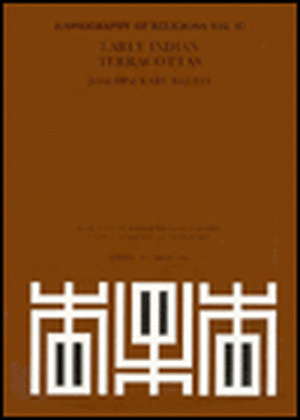Early Indian Terracottas: Iconography of Religions / Iconography of Religions, Indian Religions, cartea 17
Autor Bautzeen Limba Engleză Paperback – 31 iul 1995
This survey introduces mainly hitherto unpublished and complete figurines and plaques rather than fragments as is the case with most other publications on the same or similar subject.
The mostly complete and well preserved moulded plaques and figurines will provide a fresh and clearer insight into the very refined art of the earlier Indian terracottas, which until recently were considered more as pieces of ethnographic interest or folk art rather than art objects in their own right.
Preț: 470.76 lei
Preț vechi: 553.83 lei
-15% Nou
Puncte Express: 706
Preț estimativ în valută:
90.09€ • 93.07$ • 74.98£
90.09€ • 93.07$ • 74.98£
Carte indisponibilă temporar
Doresc să fiu notificat când acest titlu va fi disponibil:
Se trimite...
Preluare comenzi: 021 569.72.76
Specificații
ISBN-13: 9789004099241
ISBN-10: 9004099247
Pagini: 43
Dimensiuni: 185 x 258 x 5 mm
Greutate: 0.29 kg
Editura: Brill
Colecția Brill
Seria Iconography of Religions / Iconography of Religions, Indian Religions
ISBN-10: 9004099247
Pagini: 43
Dimensiuni: 185 x 258 x 5 mm
Greutate: 0.29 kg
Editura: Brill
Colecția Brill
Seria Iconography of Religions / Iconography of Religions, Indian Religions
Public țintă
Archaeologists, Indian Art historians, ethnologists, Indian Art collectors, historians of Religion and museologists.Notă biografică
Joachim K. Bautze, Ph.D. (1982) in Indian Art History, Free University of Berlin, Habilitation (1990) in Indian Art History, FU Berlin, occupies the chair for Art History of South Asia at the South Asia Institute of the Heidelberg University. He has published extensively on early Indian art as well as on Indian painting, including Indian Miniature Paintings, c. 1590-c. 1859 (Amsterdam, 1987).
Recenzii
'To conclude, Bautze's essay is an important contribution to the study of South Asian religious iconography, thanks both to its excellent raw material and its rigorous (and explicitly stated) methodology.'
Muhammad Usman Erdosy, International Journal of Hindu Studies, 1997.
Muhammad Usman Erdosy, International Journal of Hindu Studies, 1997.

